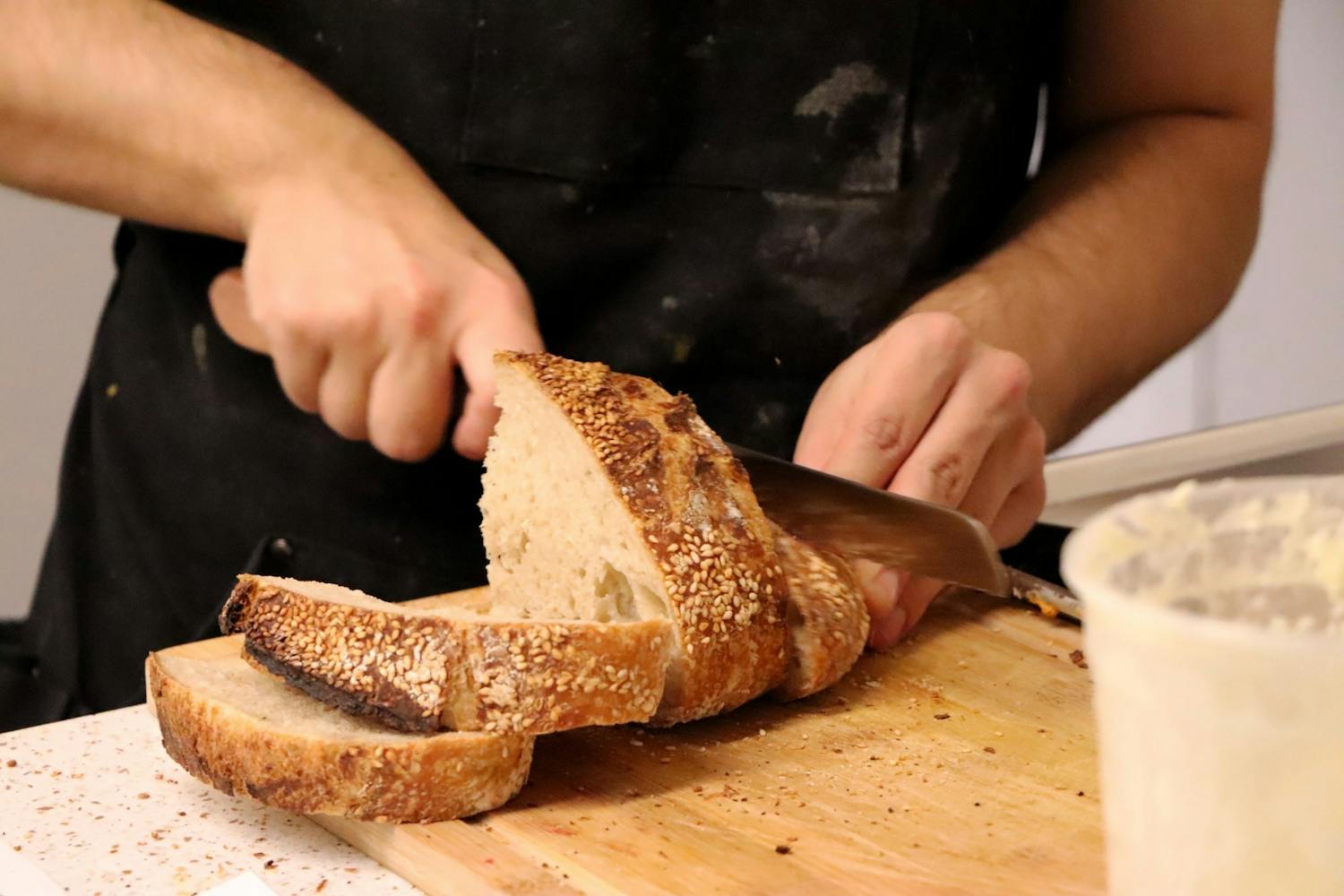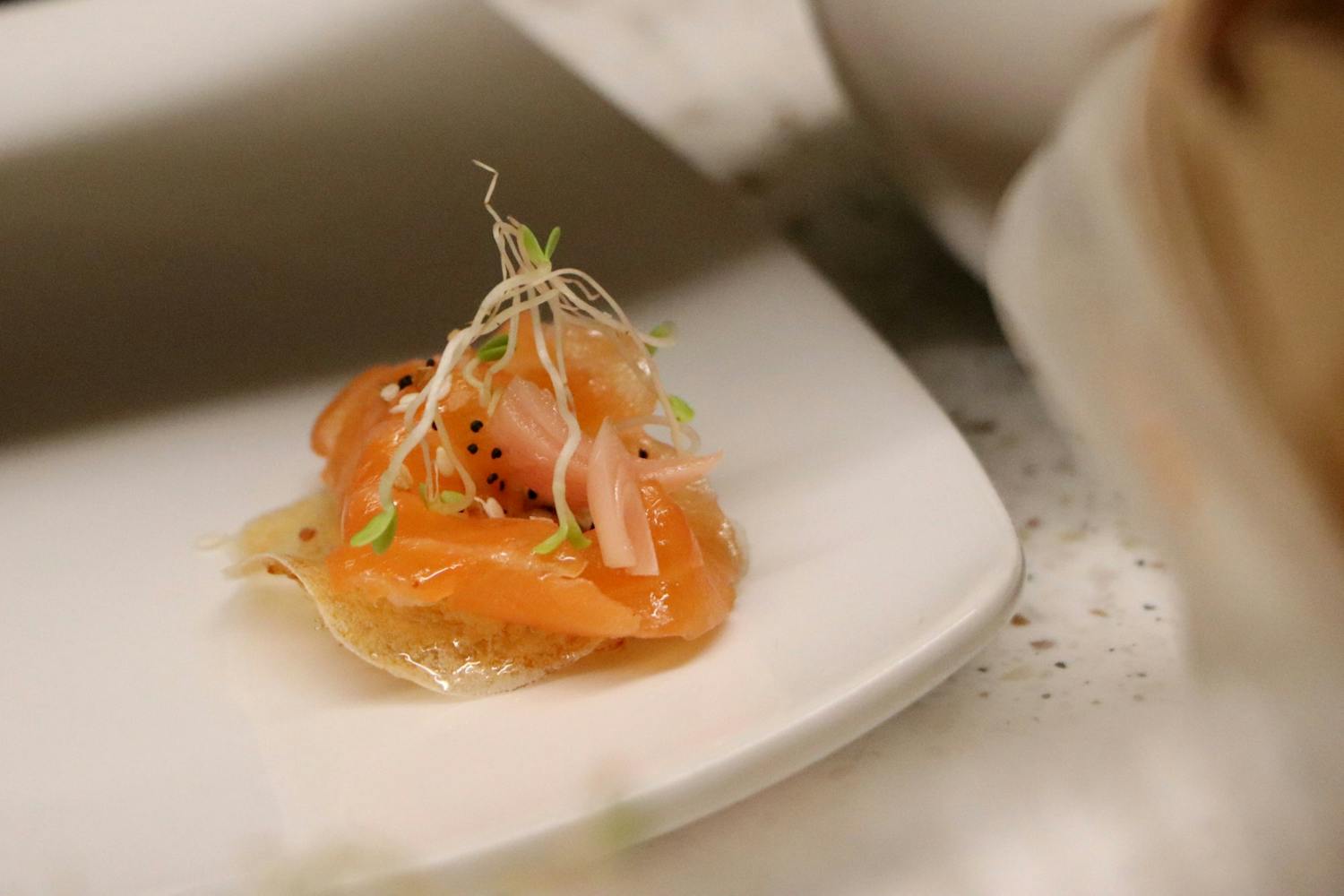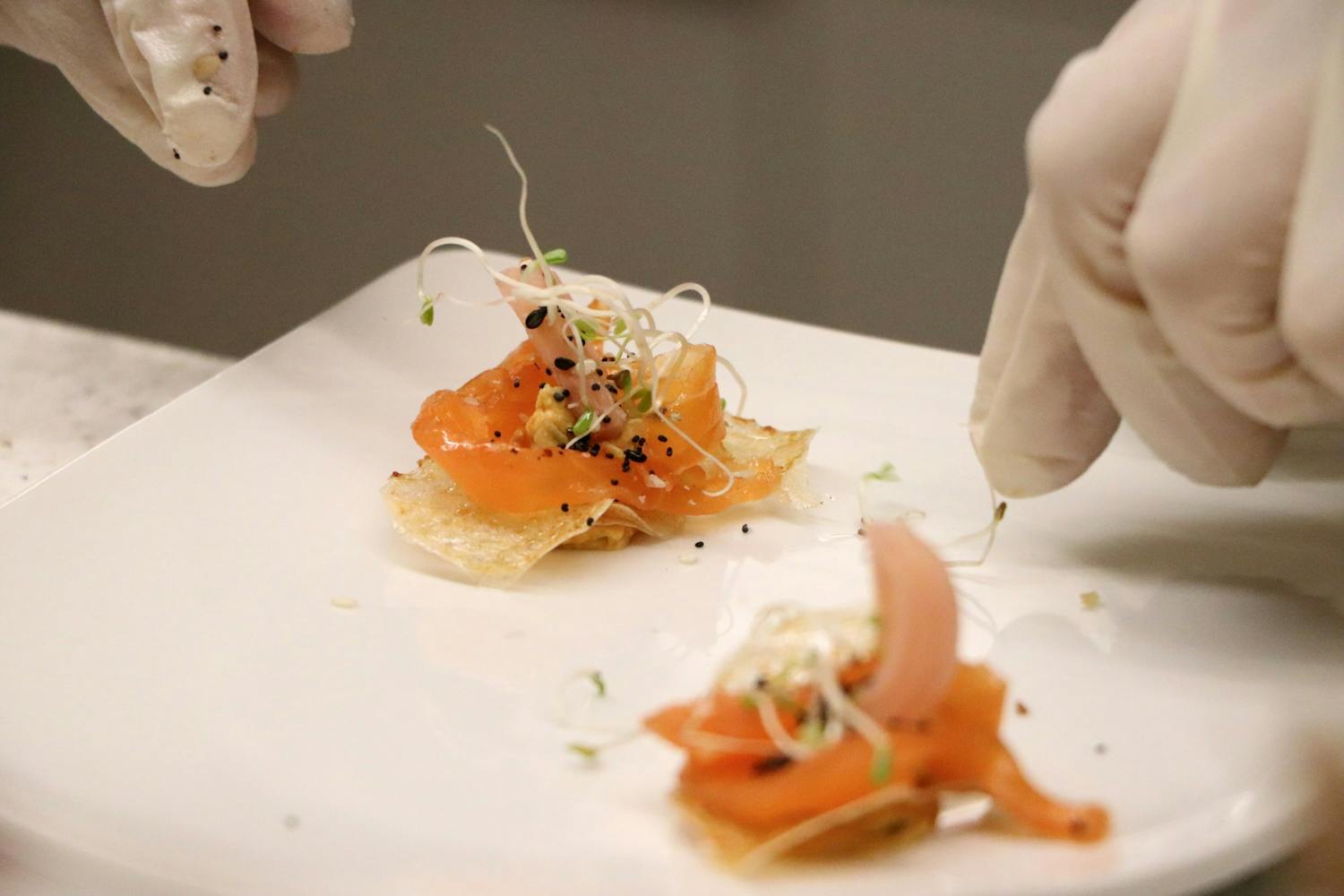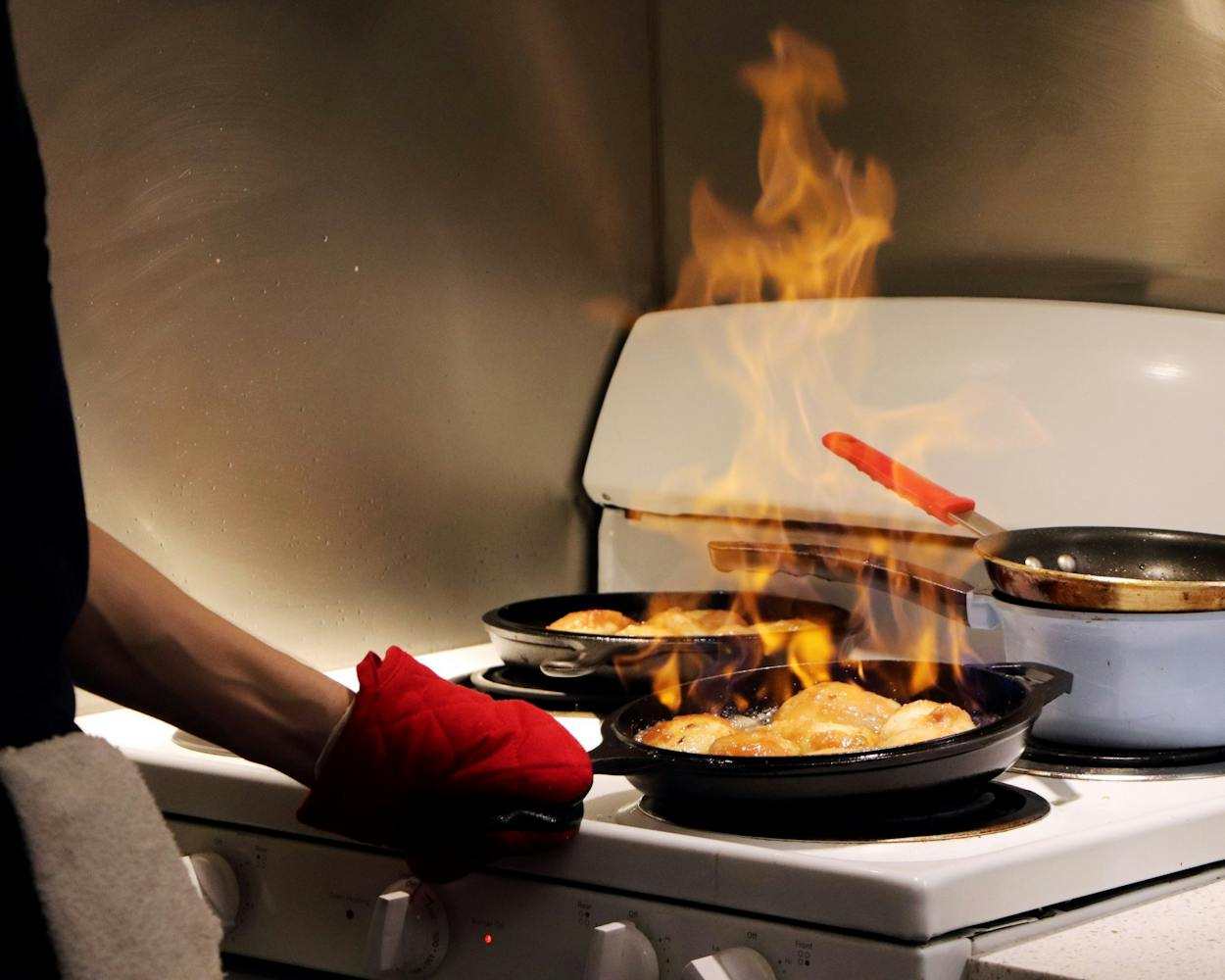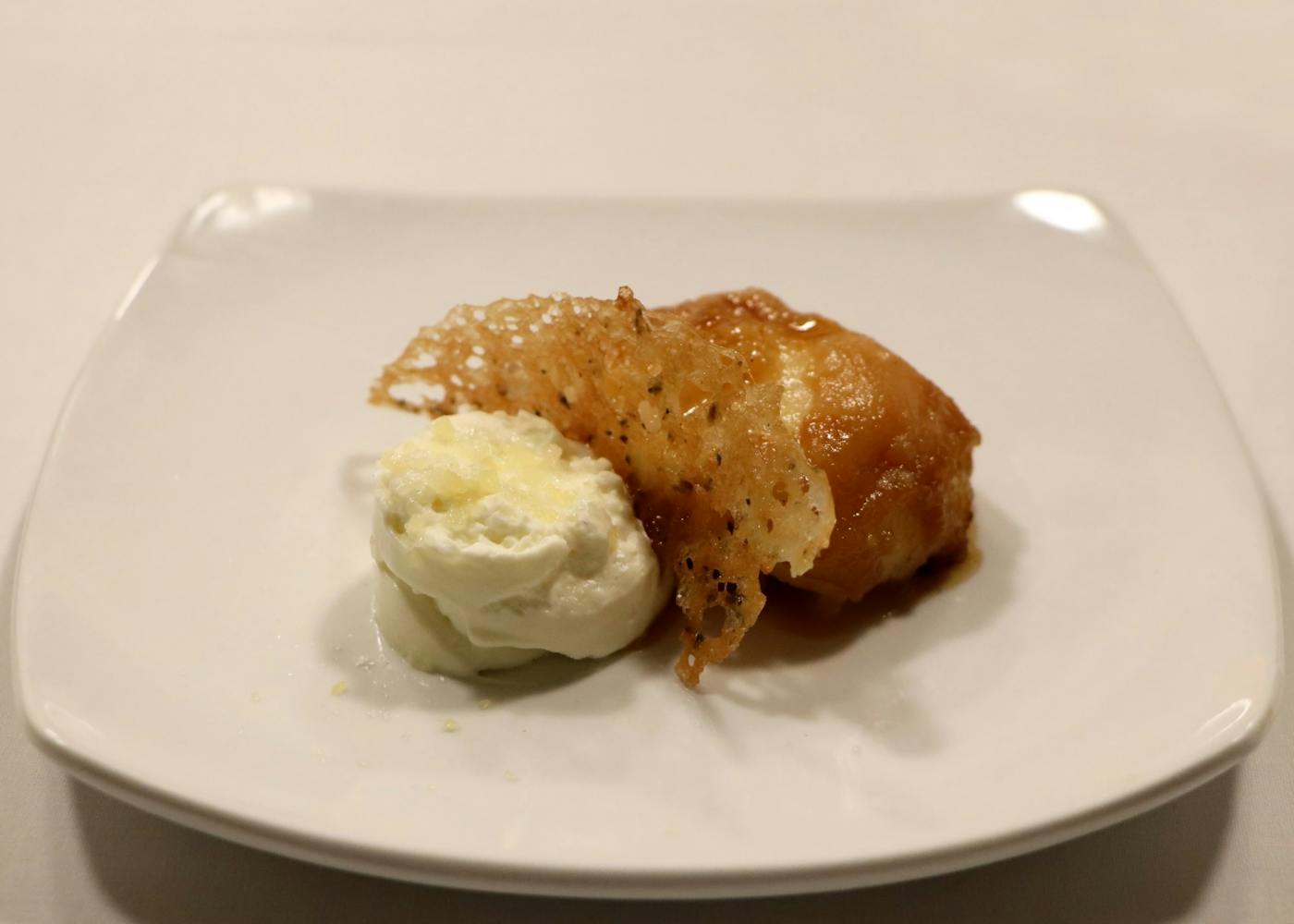Princeton is hardly short on fine dining options. Agricola plates and Mistral small dishes tantalize the taste buds; Mediterra starters and Ficus Above inventions craft an upscale, sophisticated meal experience, not to mention the other top-dollar restaurants housed in town.
Yet these restaurants are often prohibitively expensive — which is why I was intrigued by PPop Up, a new student-run fine-dining pop-up experience with the potential to offer a worthy alternative to these establishments at a fraction of the cost. Run by Ethan Arrington ’25, Sophie Leheny ’25, Allen Park ’23, Matthew Pickering ’24, Adrian Rogers ’23, and Felix Xu ’25, PPop Up is an ambitious concept: it hosts semi-regular dinner services featuring a prix fixe menu of dishes invented, tested, fine-tuned, prepared, and served by students, all from a modest upperclass dorm kitchen.
A few weeks ago, I was lucky enough to land my name on the list of attendees invited to PPop Up’s first-ever service. The menu, which I was sent ahead of time, promised alluring (and somewhat mysterious) dishes such as house-cured salmon on an “invisible” potato chip and a honey goat cheese mousse paired with carbonated sugar. The day of the dinner, I was sent a short email “highly encouraging” semi-formal wear and instructing me to arrive at the basement of 1903 Hall at 7 p.m. sharp.
As I entered the basement, I wasn’t sure what to expect: by all accounts, it is a barren, industrial space with concrete, bunker-esque walls, and exposed ceiling pipes better suited for mosh pits than fine-dining. Yet PPop Up transformed the basement into something more pleasant and sophisticated: the room was dotted with tables surrounded by colorful plastic chairs and blanketed with white tablecloths. Little touches, like the Fire Code-friendly artificial candles and soft jazz music, piped in from speakers, further adding to the ambiance.
Did the basement look like the main dining room of Agricola or the upstairs seating area of Ficus Above? No, but the juxtaposition of fine dining arrangements with what could otherwise have passed for a parking garage even more strongly showed me that this was an exclusive pop-up experience.
The servers, all of whom were students, sat me down after a short wait, and the bread quickly followed. My server took the time to explain exactly what the dish consisted of, which I found to be a nice, personal touch. The bread, he said, was a sourdough loaf with a sesame seed crust, paired with both normal and herb butter.
The bread, put simply, was a revelation. The crust was perfectly blackened; the doughy insides were impeccably thick, hearty, and not overly sour. The real game-changer, however, was the sesame seed coating: that extra element added just the right balance to the bread, ensuring I had a smile on my face before I finished even my first slice. The included herb butter was also excellent; it added more complexity to the bread while infusing the dish with a sense of the rustic. In fact, the bread was so good I specifically asked my server whether it was house-made or purchased from a high-end bakery — it was baked that very morning by one of the chefs.
Unlike most restaurants, the server didn’t collect the bread before bringing the appetizers over, which I’m immensely grateful for — I am unashamed to say that I continued eating slice after slice (the bread came in a generous portion!) of sesame sourdough between the rest of the courses PPop Up served.
Next up was the appetizer: house-cured salmon on an “invisible” potato chip with charred scallion-everything cream cheese, pickled radish, and alfalfa microgreens. Visually, the appetizer, which came in two bite-size pieces, was a sight to behold. As I stared at the semi-transparent, intricately webbed golden-brown potato chip, my server explained it was made of some “molecular gastronomy I don’t understand.” Amen to that.
The taste of each amuse bouche was exquisite. From the menu description, I imagined the appetizer would be a reimagined take on a classic cream cheese and lox bagel, but as soon as I popped one into my mouth, I could tell it was much more than that. I first tasted the salty, earthy salmon and the lightness of the potato chip before those sensations were replaced with the brininess of the radish and creamy sauce. The whirlwind of layered flavors culminated in a luxurious culinary explosion — and before I knew it, I found myself eagerly reaching for my second bite-sized piece. All in all, though the appetizer was a touch too salty for my taste, the combination of flavors it presented was uniquely delightful.
The main course was a sous vide duck leg paired with butternut squash purée, blackberry pan sauce, and red cabbage slaw. The dish looked lovely; the combination of butternut squash purée and blackberry sauce created brilliant yellow-purple hues on the plate. I started by trying the slaw, which had a natural, slightly bitter taste — the butternut squash and the blackberry, along with the slices of Granny Smith apples in the slaw, balanced out the bitterness of the cabbage. The star of the dish, of course, was the duck leg, which far exceeded my expectations. The skin was impossibly crispy; the meat was tender with a generous layer of melt-in-your-mouth soft fat. The gaminess of the duck leg was already majestic on its own — paired with the cabbage slaw and sauces, the flavors became heavenly.
The final course was dessert, a caramelized poached pear with a rosemary tuile and a honey goat cheese mousse topped with carbonated sugar. Even before I saw its final plating, I was already eagerly anticipating the dish. From my seat in the restaurant, I could see the chefs using rum and a blowtorch to flambé slice after slice of pear, minutes before they would be served. When dessert did arrive, it was another visual masterpiece. The pear was golden-brown and slightly oozing decadent juice. Next to it, a shard of rosemary tuile thin as paper separated the pear from a white cylinder of mousse. The chefs prudently ensured the dish didn’t suffer from cloying sweetness: the sugariness of the caramelized pear was counteracted by the creamy earthiness of the goat cheese mousse. What I noticed most, though, was the smorgasbord of textures: the pear and mousse were varying shades of soft and smooth, the rosemary tuile was delicately crunchy, and to top it all off, the carbonated sugar (which I later confirmed to be Pop Rocks) added a rather unexpected, inventive element of fun to the course by setting off little explosions in my mouth.

By the end of the meal, I was completely blown away. While it was evident that the students behind PPop Up haven’t completely perfected the experience — diners had to use the same fork between the entrée and dessert, for example — these minuscule oversights hardly detracted from the overall experience. Indeed, PPop Up was able to offer significant improvements over traditional restaurants; service was blazingly fast, likely due to the fact that fewer than twenty diners were present in the basement at a given time. Moreover, PPop Up is a bargain compared to other high-end dining establishments — the meal costs $28, not including tips.
As I walked out of the basement at the end of the meal, I felt as if I had just borne witness to a transformative event. I can’t recommend a meal at PPop Up more; if you’re lucky enough to snag a reservation in the near future, come and experience it for yourself, and make sure to tip generously at the end of what I found to be an astounding dinner.
Joshua Yang is a Contributing Writer for The Prospect at the ‘Prince.’ He can be reached at joshuayang@princeton.edu or on Twitter at @joshuaqyang.





